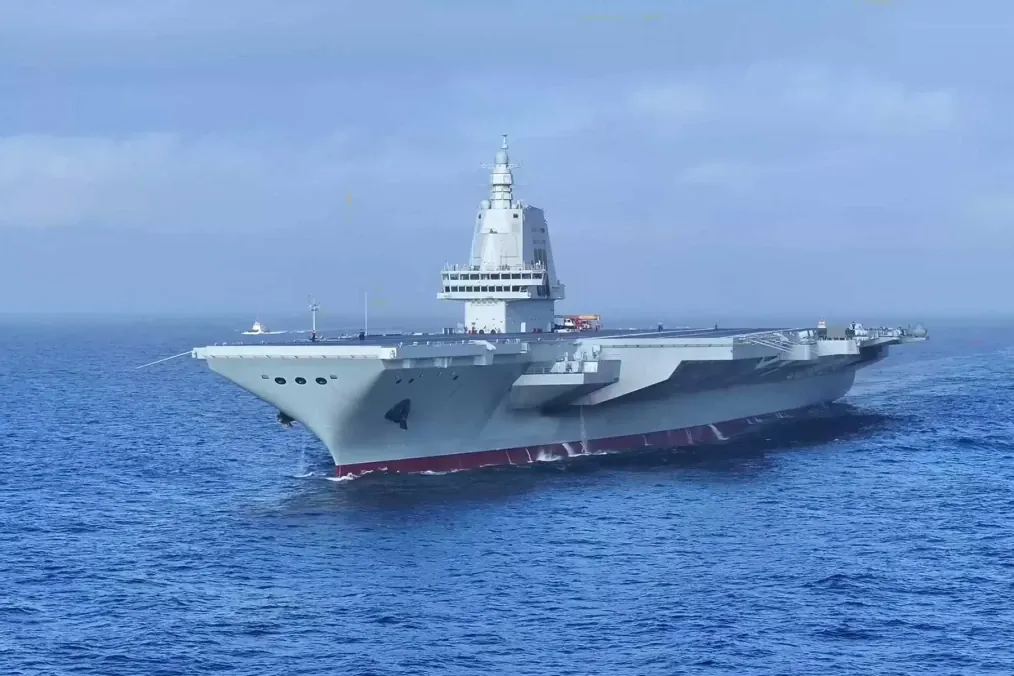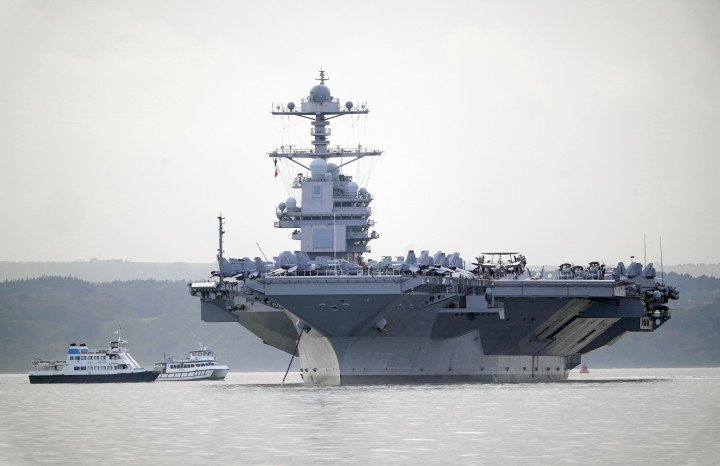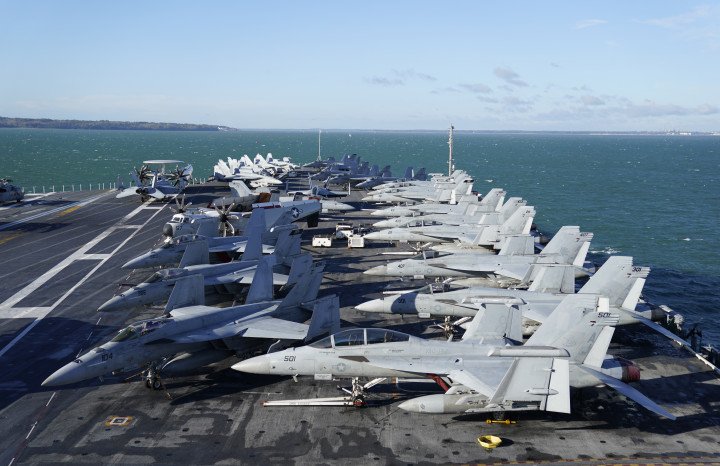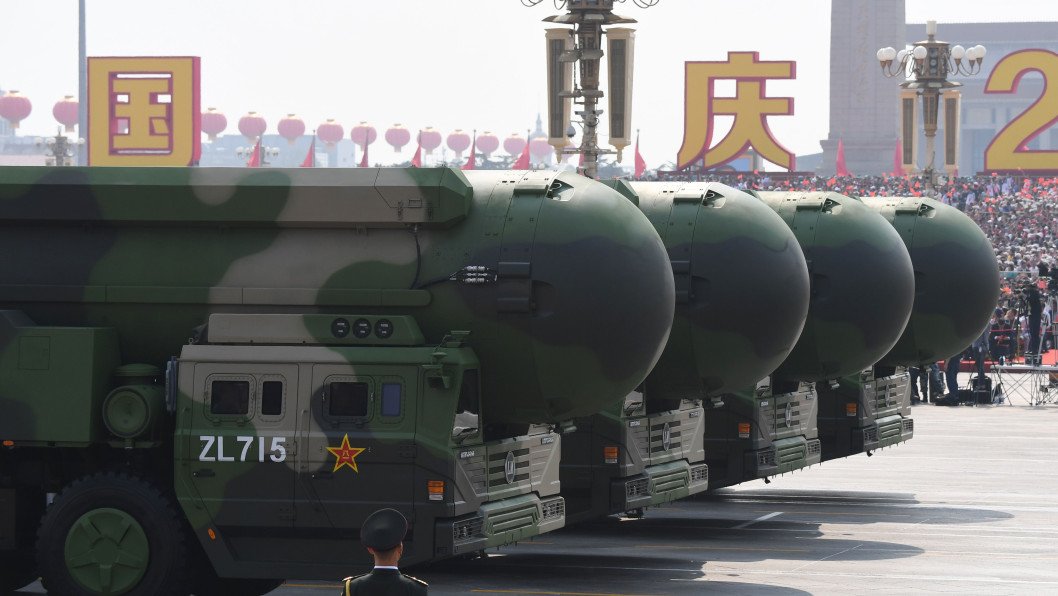- Category
- Latest news
China Unveils USS Ford Rival: Fujian Carrier With EM Launch and Stealth Fleet

China’s third and most advanced aircraft carrier, Fujian (Type 003), is expected to enter service later this year, three years after its launch from Jiangnan Shipyard on June 17, 2022.
The development marks a key milestone in China’s ongoing naval expansion and is poised to significantly enhance the operational capabilities of the People’s Liberation Army Navy (PLAN).
According to Army Recognition on June 17, the Fujian is China’s first carrier equipped with electromagnetic catapult launch systems and a flat-deck configuration, supported by conventional propulsion.
Designated hull number 18, the vessel has completed eight sea trials since May 2024, accumulating over 100 days at sea. The latest trials in May 2025 included catapult-assisted takeoff operations with the Shenyang J-35 stealth fighter, signaling the final stages before full commissioning.
The Fujian features a full-length flight deck, three electromagnetic catapults, and arresting gear. With a full-load displacement exceeding 80,000 tons, it is the first non-nuclear-powered carrier globally to adopt electromagnetic launch systems, a technology previously operational only on the US Navy’s USS Gerald R. Ford.

The ship is configured to support a full carrier air wing, including fixed-wing stealth fighters, electronic warfare aircraft, airborne early warning platforms, anti-submarine aircraft, and unmanned systems.
Chinese military media have outlined that the Fujian will operate aircraft such as the J-15T (a catapult-capable version of the J-15), the J-15D electronic warfare variant, and potentially the next-generation J-35 stealth fighter.
The KJ-600 early warning aircraft and platforms with active electronically scanned array (AESA) radar systems are also expected to support carrier-based surveillance and targeting. Many of these aircraft variants were showcased during the 2024 Zhuhai Airshow and have since been observed in testing with the Fujian.
The Fujian joins two existing carriers: the Liaoning (Type 001), commissioned in 2012 and rebuilt from a Soviet-era hull, and the Shandong (Type 002), commissioned in 2019 as China’s first domestically built carrier.

In contrast, the Fujian represents a leap in design evolution, integrating catapult systems and removing the ski-jump configuration of earlier vessels. Together, the three carriers reflect a phased development strategy: adaptation, modification, and independent design.
Operationally, the Fujian is expected to support China’s three-theater naval strategy, covering the East China Sea, South China Sea, and Western Pacific. Analysts continue to assess whether it will be assigned to the East Sea Fleet, responsible for operations in increasingly contested waters, or the South Sea Fleet, which remains active amid heightened US naval presence and ongoing maritime disputes in the South China Sea.
The carrier’s range and configuration may also support extended deployments into the Indian Ocean and Middle East, particularly through the Strait of Malacca and into the Red Sea.
Technical assessments suggest the Fujian may use a medium-voltage direct current (MVDC) integrated power system to support electromagnetic catapults, AESA radars, and other high-consumption systems.

Propelled by steam turbines and auxiliary diesel generators, the carrier is estimated to reach speeds of up to 35 knots with a range nearing 10,000 nautical miles. Observers view the ship as a platform for evaluating technologies applicable to future Chinese nuclear-powered carriers, potentially designated as Type 004 or 005.
Once commissioned, the Fujian will enable China to maintain a rotational carrier deployment model: one carrier on active duty, one in maintenance, and one in training. This structure is intended to support sustained naval presence in key strategic regions, including heavily contested zones of the Pacific.
State media coverage of recent dual-carrier drills involving the Liaoning and Shandong highlights the PLAN’s growing operational readiness. The full commissioning of the Fujian could occur as early as August 2025, aligning with the anniversary of the PLA, though further integration steps may extend the timeline into 2026.
Earlier in June 2025, Chinese military researchers claimed a breakthrough in hypersonic glide vehicle technology, announcing the potential to launch global strikes from space-based platforms. According to a PLA-led study, the re-entry vehicles could reach speeds up to Mach 20 and be launched from satellites, significantly challenging missile defense systems.


-ce9a134791207c81306f56ab3d75ffb6.jpg)
-72b63a4e0c8c475ad81fe3eed3f63729.jpeg)
-45ed3be17a7bb74903649ed9258196f8.jpg)

